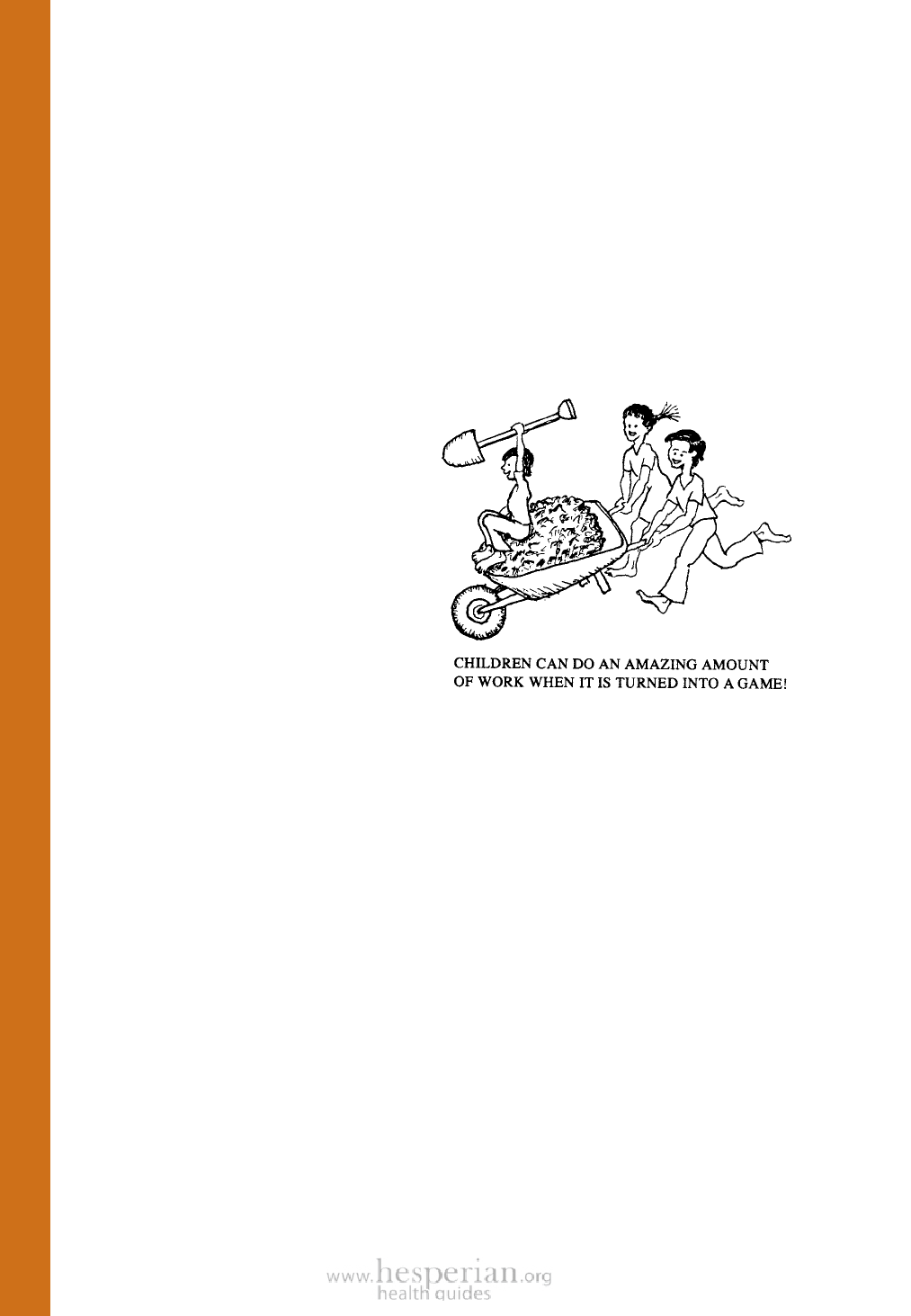
Where There Is No Doctor 2011
Working and Learning Together for the Common Good
There are many ways to interest and involve people in working together to meet
their common needs. Here are a few ideas:
1. A village health committee. A group of able, interested persons can be
chosen by the village to help plan and lead activities relating to the well-being of the
community—for example, digging garbage pits or latrines. The health worker can and
should share much of his responsibility with other persons.
2. Group discussions. Mothers, fathers, schoolchildren, young people, folk healers,
or other groups can discuss needs and problems that affect health. Their chief
purpose can be to help people share ideas and build on what they already know.
3. Work festivals. Community
projects such as putting in a water
system or cleaning up the village go
quickly and can be fun if everybody
helps. Games, races, refreshments,
and simple prizes help turn work into
play. Use imagination.
4. Cooperatives. People can help
keep prices down by sharing tools,
storage, and perhaps land. Group
cooperation can have a big influence
on people’s well-being.
5. Classroom visits. Work with the village schoolteacher to encourage health-
related activities, through demonstrations and play acting. Also invite small groups
of students to come to the health center. Children not only learn quickly, but they can
help out in many ways. If you give children a chance, they gladly become a valuable
resource.
6. Mother and child health meetings. It is especially important that pregnant
women and mothers of small children (under five years old) be well informed
about their own and their babies’ health needs. Regular visits to the health post are
opportunities for both check-ups and learning. Have mothers keep their children’s
health records and bring them each month to have their children’s growth recorded
(see the Child Health Chart, p. 297). Mothers who understand the chart often take
pride in making sure their children are eating and growing well. They can learn
to understand these charts even if they cannot read. Perhaps you can help train
interested mothers to organize and lead these activities.
7. Home visits. Make friendly visits to people’s homes, especially homes of families
who have special problems, who do not come often to the health post, or who do
not take part in group activities. But respect people’s privacy. If your visit cannot be
friendly, do not make it—unless children or defenseless persons are in danger.
w24